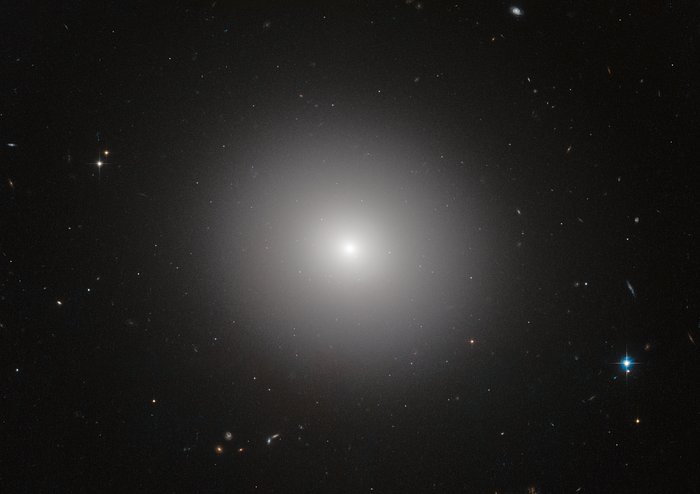Elliptical galaxy IC 2006
This NASA/ESA Hubble Space Telescope image shows an elliptical galaxy known as IC 2006. Massive elliptical galaxies like these are common in the modern Universe, but how they quenched their once furious rates of star formation is an astrophysical mystery. Now, the NASA/ESA Hubble Space Telescope and ESO's Very Large Telescope (VLT) have revealed that three billion years after the Big Bang, these types of galaxies still made stars on their outskirts, but no longer in their interiors. The quenching of star formation seems to have started in the cores of the galaxies and then spread to the outer parts.
Crédit:ESA/Hubble & NASA Image acknowledgement: Judy Schmidt and J. Blakeslee (Dominion Astrophysical Observatory). Note that the image is not related to science release content. Science acknowledgement: M. Carollo (ETH, Switzerland)
À propos de l'image
| Identification: | eso1516b |
| Type: | Observation |
| Date de publication: | 16 avril 2015 20:00 |
| Communiqués de presse en rapport: | eso1516 |
| Taille: | 3895 x 2751 px |
À propos de l'objet
Fonds d'écran
Coordinates
| Position (RA): | 3 54 28.41 |
| Position (Dec): | -35° 58' 1.24" |
| Field of view: | 3.25 x 2.29 arcminutes |
| Orientation: | North is 25.5° left of vertical |
Couleurs & filtres
| Domaine | Longueur d'onde | Télescope |
|---|---|---|
| Visible B | 475 nm | Hubble Space Telescope ACS |
| Visible B | 475 nm | Hubble Space Telescope ACS |
| Infrarouge I | 814 nm | Hubble Space Telescope ACS |
| Infrarouge I | 814 nm | Hubble Space Telescope ACS |

